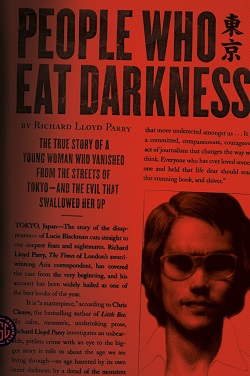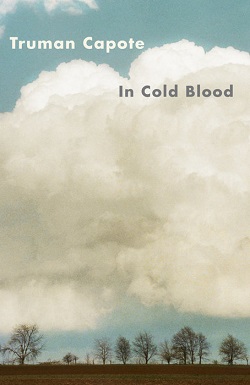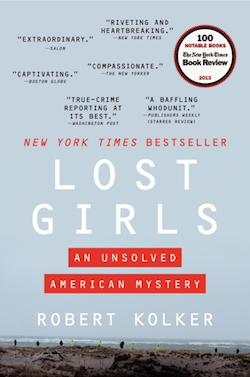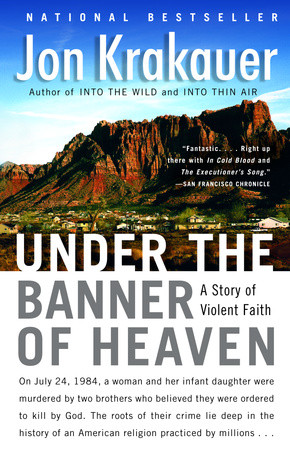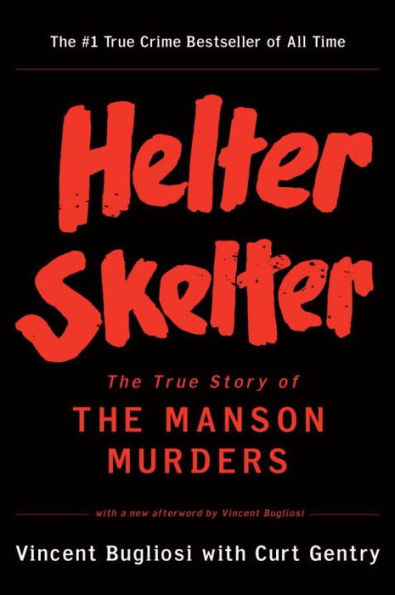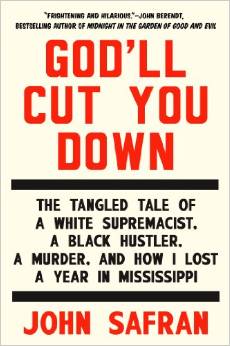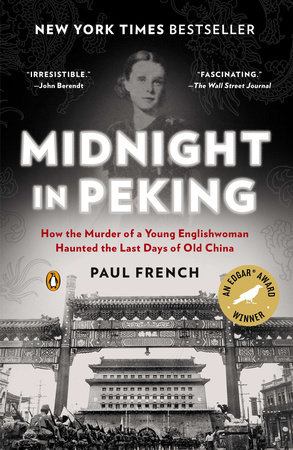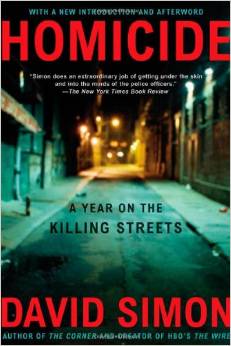I love true crime. There, I said it. Though often maligned due to its associations with lurid tabloids and pulpy courtroom dramas, there are examples of the genre that are literary in quality and aspiration (and I can just feel the condescending eye-rolls from the well-read literary set). But now that we’re living in a post-Serial world and The Wire has been enshrined as the greatest television series ever, I think it’s time to revisit this misconception. The greatest examples of the genre provide not only the pleasures of a gripping, whodunit plot, but they are also an examination of complex psychology and civilization when the tranquility of everyday life has been shattered.
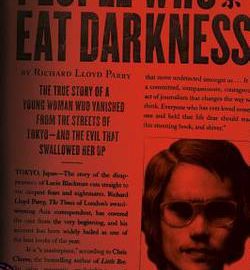
9 Brilliant Books that Will Change How You See True Crime
One of those books that makes you fall off the face of the earth until you finish it, People Who Eat Darkness concerns the case of a young British woman who disappeared from the streets of Tokyo in 2001. Following the discovery of her dismembered remains in a seaside cave, Richard Lloyd Parry spent ten years dissecting Japan’s convoluted legal system, Tokyo’s booming sex industry, and the lingering stigma of Korean immigration in order to delve deep into the “unprecedented and extremely evil” mind of the accused. Selected as one of the best books of 2012 by The New York Times and Publishers Weekly, it shines light into dark corners of Japan that have never been glimpsed before.
One of those books that makes you fall off the face of the earth until you finish it, People Who Eat Darkness concerns the case of a young British woman who disappeared from the streets of Tokyo in 2001. Following the discovery of her dismembered remains in a seaside cave, Richard Lloyd Parry spent ten years dissecting Japan’s convoluted legal system, Tokyo’s booming sex industry, and the lingering stigma of Korean immigration in order to delve deep into the “unprecedented and extremely evil” mind of the accused. Selected as one of the best books of 2012 by The New York Times and Publishers Weekly, it shines light into dark corners of Japan that have never been glimpsed before.
Laconic and atmospheric, this intensively researched narrative of the Clutter family of Holcomb, Kansas, and the two men who brutally murdered them on the night of November 15, 1959, generates both mesmerizing suspense and astonishing empathy. In Cold Blood is a work that transcends its moment, yielding poignant insights into the nature of American violence.
Laconic and atmospheric, this intensively researched narrative of the Clutter family of Holcomb, Kansas, and the two men who brutally murdered them on the night of November 15, 1959, generates both mesmerizing suspense and astonishing empathy. In Cold Blood is a work that transcends its moment, yielding poignant insights into the nature of American violence.
MENTIONED IN:
There is a serial killer at large on Long Island with five murders to his credit. Lost Girls is the haunting account of the unsolved case and a humanizing depiction of Craigslist escorts. Robert Kolker reveals the three-dimensional truths about the lives of the five known victims—the struggling towns they came from and the dreams they chased. He also gained unprecedented access to the remote, idyllic Oak Beach neighborhood where the police have failed, the body count has risen, and neighbors have begun pointing their fingers at one another—and where these women’s stories come together in death and a dark mystery.
There is a serial killer at large on Long Island with five murders to his credit. Lost Girls is the haunting account of the unsolved case and a humanizing depiction of Craigslist escorts. Robert Kolker reveals the three-dimensional truths about the lives of the five known victims—the struggling towns they came from and the dreams they chased. He also gained unprecedented access to the remote, idyllic Oak Beach neighborhood where the police have failed, the body count has risen, and neighbors have begun pointing their fingers at one another—and where these women’s stories come together in death and a dark mystery.
Jon Krakauer, author of Into The Wild and Into Thin Air, has staked his literary reputation on insightful chronicles of lives conducted at the outer limits. He now shifts his focus from extreme physical adventure to the extremes of religious belief within America’s own borders, taking readers inside an isolated community of Mormon fundamentalists who insist they received a command from God to kill an innocent woman and her baby girl. Krakauer’s multilayered, bone-chilling narrative of polygamy and unyielding faith raises provocative questions about the nature of religious belief.
Jon Krakauer, author of Into The Wild and Into Thin Air, has staked his literary reputation on insightful chronicles of lives conducted at the outer limits. He now shifts his focus from extreme physical adventure to the extremes of religious belief within America’s own borders, taking readers inside an isolated community of Mormon fundamentalists who insist they received a command from God to kill an innocent woman and her baby girl. Krakauer’s multilayered, bone-chilling narrative of polygamy and unyielding faith raises provocative questions about the nature of religious belief.
In the summer of 1969, a series of brutal, random murders shook Los Angeles and captured headlines across America. The Manson murders assumed the proportions of myth, coming to mark the end of the sixties and represent the dark underbelly of that era. Vincent Bugliosi was the prosecuting attorney in the trial, and this book is his enthralling account of the case. The meticulous detective work and the reconstruction of the philosophy Manson inculcated in his fervent followers not only make for a true crime classic, but also, in the words of The New Republic, a “social document of rare importance.”
In the summer of 1969, a series of brutal, random murders shook Los Angeles and captured headlines across America. The Manson murders assumed the proportions of myth, coming to mark the end of the sixties and represent the dark underbelly of that era. Vincent Bugliosi was the prosecuting attorney in the trial, and this book is his enthralling account of the case. The meticulous detective work and the reconstruction of the philosophy Manson inculcated in his fervent followers not only make for a true crime classic, but also, in the words of The New Republic, a “social document of rare importance.”
It was the emblematic crime of our era: on a cold November day in Amsterdam, Mohammed Bouyeri, the son of Moroccan immigrants and an Islamic extremist, shot and killed the celebrated and controversial filmmaker Theo van Gogh, great-grandnephew of Vincent and iconic European provocateur. The murder horrified Holland, a nation that prides itself on being a bastion of tolerance, and sent shock waves across Europe and around the world. Murder In Amsterdam is Ian Buruma’s exploration of the greatest dilemma of our time: what happens when political Islam collides with the secular West and tolerance finds its limits.
It was the emblematic crime of our era: on a cold November day in Amsterdam, Mohammed Bouyeri, the son of Moroccan immigrants and an Islamic extremist, shot and killed the celebrated and controversial filmmaker Theo van Gogh, great-grandnephew of Vincent and iconic European provocateur. The murder horrified Holland, a nation that prides itself on being a bastion of tolerance, and sent shock waves across Europe and around the world. Murder In Amsterdam is Ian Buruma’s exploration of the greatest dilemma of our time: what happens when political Islam collides with the secular West and tolerance finds its limits.
John Safran, a Jewish Australian documentarian, spent two days in Mississippi with Richard Barrett, a notorious white supremacist, for a film about race. When Barrett was brutally murdered a year later by a young black man, Safran “realized this was [his] Truman Capote moment” and hightailed it from Melbourne back to Mississippi. As he became entwined in the lives of those connected with the murder—white separatist frenemies, oddball neighbors, even the killer himself—the more he discovered how complex the truth about someone’s life—and death—can be. This is a brilliant, haunting, hilarious, unsettling story about race, money, sex, and power in the American South from an outsider’s point of view.
John Safran, a Jewish Australian documentarian, spent two days in Mississippi with Richard Barrett, a notorious white supremacist, for a film about race. When Barrett was brutally murdered a year later by a young black man, Safran “realized this was [his] Truman Capote moment” and hightailed it from Melbourne back to Mississippi. As he became entwined in the lives of those connected with the murder—white separatist frenemies, oddball neighbors, even the killer himself—the more he discovered how complex the truth about someone’s life—and death—can be. This is a brilliant, haunting, hilarious, unsettling story about race, money, sex, and power in the American South from an outsider’s point of view.
In 1937, Peking was thick with tension. A heady mix of privilege and opulence—Japanese troops had occupied nearby Manchuria and were encircling the ancient city walls, One night, the mutilated body of Pamela Werner, the daughter of a former British consul to China, is discovered, and even as the Japanese tighten their noose around the city, her murder transfixes Peking. Based on seven years of research, historian and China expert Paul French at last uncovers the truth behind this notorious murder and offers a rare glimpse of the last days of colonial China.
In 1937, Peking was thick with tension. A heady mix of privilege and opulence—Japanese troops had occupied nearby Manchuria and were encircling the ancient city walls, One night, the mutilated body of Pamela Werner, the daughter of a former British consul to China, is discovered, and even as the Japanese tighten their noose around the city, her murder transfixes Peking. Based on seven years of research, historian and China expert Paul French at last uncovers the truth behind this notorious murder and offers a rare glimpse of the last days of colonial China.
Where did my love of true crime come from? I blame it on my parents, whose idea of family television was watching Homicide: Life on the Street. If you’re not familiar with Homicide you’re seriously missing out. A detective procedural set in Baltimore that aired throughout the 90s, one of its producers/writers, David Simon, later went on to create The Wire. Yes, my parents thought that the precursor to The Wire was appropriate viewing for a seven-year-old. But long before The Wire or Homicide were on the air, Simon was the author of this classic book from which these acclaimed television shows sprang.
Where did my love of true crime come from? I blame it on my parents, whose idea of family television was watching Homicide: Life on the Street. If you’re not familiar with Homicide you’re seriously missing out. A detective procedural set in Baltimore that aired throughout the 90s, one of its producers/writers, David Simon, later went on to create The Wire. Yes, my parents thought that the precursor to The Wire was appropriate viewing for a seven-year-old. But long before The Wire or Homicide were on the air, Simon was the author of this classic book from which these acclaimed television shows sprang.

